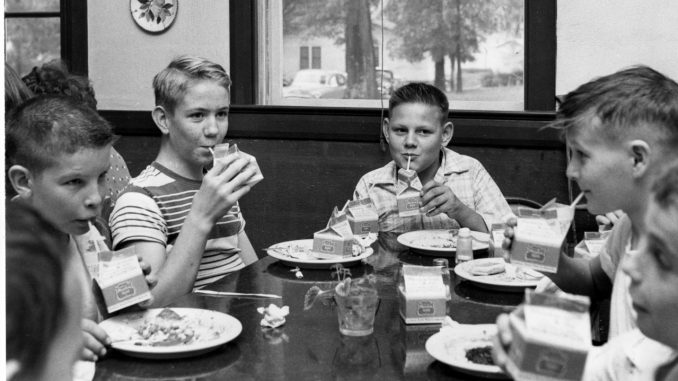
Part of the TFP Founding Principle Series, Tony Wyman continues with an explanation of Free Markets.
Trading Pudding for Pickles ~ How the Free Market Made School Lunches Great
No matter how many times I told my mother that I absolutely despised Snak Pak Butterscotch Pudding, every day I opened my lunch box in middle school, there it was. That vile, brown-grey paste, sitting in its little plastic tub, took up space in my lunch that should have been occupied by the food I craved most: Vlasic dill pickles.
But, my mother, who religiously packed my lunch every day, insisted that I didn’t actually like pickles and that every boy of a certain age absolutely loved Snak Pak Butterscotch Pudding and, therefore, I simply didn’t know what was good for me. In her benevolent authoritarianism, she insisted upon doing for me what I could obviously not do for myself: make the correct lunch menu choice. Pickles were out, pudding was in.
Fortunately for me, my mother’s control of my diet ended once I got on the bus and was deposited at the school.
Instead, get this, she gave him…Vlasic dill pickles.
Three of them, wrapped in foil, their juices seeping out of the aluminum, leaving a shallow puddle of briny goodness at the bottom of Rob’s lunch box.
It was a match meant to be.
What transpired next was a free market transaction, unregulated by overbearing, yet well-meaning, authorities. Rob wanted pudding, I wanted pickles, so we traded. In fact, we made that same transaction every day for the next five months. My mother, delighted that I had come to my senses about Snak Pak Butterscotch Pudding, kept supplying the stuff and I kept distributing it to Rob, whose mother supplied him with the pickles I desperately wanted.
This is how the free market works in the world outside middle school cafeterias, as well. Producers create goods and services that are in demand by consumers who trade for those goods. The value of the goods and services is determined by the consumer, who chooses to purchase what the producer offers if the consumer believes the value of the offering is equal to or greater than what he must trade in return.
The Pickles for Pudding Trade
To make this simple to understand, let’s look at the pickles for pudding trade. The monetary value of the two goods was heavily imbalanced. Back in the 1970’s, pickles were much cheaper than Snak Pak Butterscotch Pudding.
If Rob took the time to divide the cost of a jar of pickles by the number of pickles in the container, he would have realized that he was getting a great deal trading for my pudding.
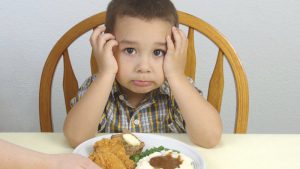
I, on the other hand, would have concluded that I was getting ripped off. Instead of giving up my pudding for a mere three pickles, I should have held out for five. The dollar value of trading one cup of Snak Pak Butterscotch Pudding was equal to the dollar value of five pickles.
But, here’s the thing, Rob didn’t have five pickles to trade. He only had three. His supplier, Mrs. Rob, wasn’t willing to produce five pickles for him, so had I insisted upon a trade that was balanced on a monetary basis, Rob would have been stuck with three pickles he didn’t want and I would have had a tub of repulsive goo to toss in the trash.
Neither of us would have gotten what we wanted.
So, here’s where free market economics came in. The scarcity of supply of pickles, compared to the demand for the product, drove up their value to the point where I was willing to trade Snak Pak Butterscotch Pudding to get them, even though I had to pay more for the pudding than Rob paid for the pickles. Because I wanted the pickles badly, I drove their market value up. In relation to pickles, the currency Rob used to trade, I also drove the value of pudding down. Rob, having a lower-cost, higher-value product was in a stronger market position than was I because he, essentially, owned the supply portion of the pickle market.
That is until Sonia moved to my school.
Sonia’s parents didn’t allow her to eat anything that had sugar in it. The poor girl had never had a sweet thing in her life. No chocolate, not candy, no Snak Pak Butterscotch Pudding. But she did have vegetables, rice, cheese sandwiches and … you know where we are going… a freakin’ mound of VLASIC DILL PICKLES! Not only did she have dill pickles, but she also had hot pickles, sweet gherkins, olives and even cocktail onions.
Hello Sonia, good-bye Rob!
Suddenly, the economics of the free market changed dramatically. Rob was now supplying a product in a market that was saturated with other suppliers willing to trade their goods for much less than was Rob. Sonia, having never tasted Snak Pak Butterscotch Pudding, was willing to trade all seven of her delicious Vlasic Dill Pickles for my pudding.
Had I been a tougher negotiator, in fact, I am sure she would have given me her pickles for just one spoonful of pudding. But, having learned from Rob’s example, having seen how under-supply created an unsustainable condition that invited competition to enter the market, I decided to purposely increase my supply of sweets to Sonia to increase the value of our trade.
I didn’t want her to seek out other suppliers of Snak Pak Butterscotch Pudding (the lunchroom was practically lousy with the stuff), so I increased my contribution to the trade. I offered her not only the pudding, but also half my Hersey Chocolate bar that I normally ate after school in exchange for her promise to always supply me with pickles. Since no one else had a Hersey Chocolate bar, I was in a dominate market position and was able to secure my supply of pickles without worrying that competition would come in and outbid me.
Now, what can we learn from my middle school pickles for pudding experiment in free market capitalism?
The Pudding Experiment in Free Market Capitalism
First, markets create value.
Ask yourself this question: why are diamonds worth more than loaves of bread? The answer is because there is an abundance of loaves of bread and a scarcity of diamonds. If a worldwide famine happened and farms all over the world ceased producing food, which item would be worth more? Diamonds or bread? The answer, obviously, is bread.
The market today, understanding that worldwide famine is not likely, that there are more people producing bread than there is a demand for the product, values bread substantially less than it does diamonds. On the surface, this really makes little sense. Diamonds are, outside of a handful of practical uses, not really very valuable.
You can’t eat them, you can’t build shelter with them, and you can’t clothe yourself with them.
So why are diamonds valued so highly? The answer is, in part, due to the emotional significance and symbolism of a diamond ring, but also, largely, due to the supply portion of the market equation. The DeBeers Company, the most powerful supplier of diamonds in the world, carefully controls the supply of the rocks to the point where they’ve created an artificially high price for their goods. They operate as a cartel, preventing the free market from driving down the cost of diamonds to a point where their value equals supply by artificially restricting the supply.
Second, ultimately, the free market encourages innovation, cooperation, and leads to lower prices.
When Rob owned the entire pickle supply at my school, prices were outrageously high, innovation in the pickle market was effectively nil, and there was a “take it or leave it” mentality in the marketplace. When Sonia moved in, the market for pickles and other similar products exploded.
Rob, suddenly without a supply of Snak Pak Butterscotch Pudding, started to bring other things to lunch that he could trade for pudding. Instead of Rob’s three lousy dill pickles, a kid with pudding could get five Oreos and half a ham sandwich, a trade that never would have happened before Sonia joined the pickle trade market. The relative value of three dill pickles plummeted and consumers were able to get much more for much less.
Third, businesses in a free market are pressured by consumers to act fairly and to treat their consumers well.
As Rob learned, having a monopoly is a lot of fun so long as no one comes in and breaks up your good deal. But, once a new supplier shows up and starts offering consumers a better product at a better price, having once taken advantage of consumers can have a long-lasting, negative impact on your business. Even though Rob increased what he was willing to trade for pudding, I never went back to him.
Sonia was much nicer to do business with, not just because she had better product and a wider offering, but also because she had always treated me fairly. Consumers remember when suppliers take advantage of the market and jump to new sources as soon as someone else enters the market.
And, fourth, all these transactions happened without teachers, moms or other authorities getting involved and setting onerous rules.
Of course, had Rob decided that he was just going to take my pudding without trading, an authority figure would have stepped in and prevented him from doing so. That is, or should be, the role of our government in the free market.
Instead of creating rules that restrict trade, that curb innovation, and that prevent other suppliers from entering the market, government should use its authority to prevent unfair conditions from existing in the market that prevent fair competition from happening.
Think about Rob’s early position in the pickle supply market.
If he had prevented Sonia from entering the business of supplying pickles by using force against her, that would have been a situation where government, this case in the form of a lunch lady, should have stepped in and prevented his act of aggression against Sonia.
If, on the other hand, the lunch lady in question had decided that her role was to influence the market by creating an artificial economy that met her sense of what’s fair (four pickles equals one tub of Snak Pak Butterscotch pudding, for example), the result of her interference would have created a series of unexpected consequences…
Perhaps Sonia would just pull out of the market, altogether.
Perhaps Rob would have had to restrict trades to days when he had saved up enough pickles to meet the new, government-mandated exchange rate of four.
Perhaps, out of rebellion, I would have dumped my Snak Pak Butterscotch Pudding in the water fountain, creating my own version of the Boston Tea Party, just with vile brown-grey paste, instead.
Ultimately, the unrestricted free market transactions that took place in the lunchroom of my middle school created a climate where both consumers and suppliers were satisfied with the results, where no one resented the power of the lunch lady and where everyone went to their next class with a stomach full of the things they wanted. And if that isn’t a great example of how the market should operate in a free and civil country, I don’t know what one is.
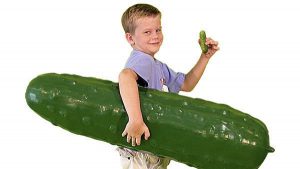
http://www.americanthinker.com/articles/2012/08/why_free_markets.html
https://priceonomics.com/post/45768546804/diamonds-are-bullshit
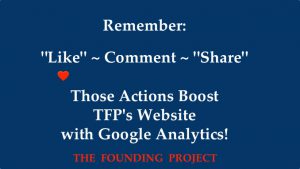
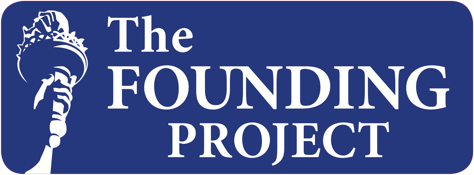

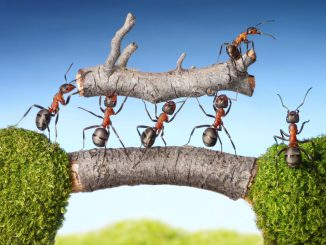
Most excellent.
Thanks. TFP thinks Tony is a great writer!
We sure like him!